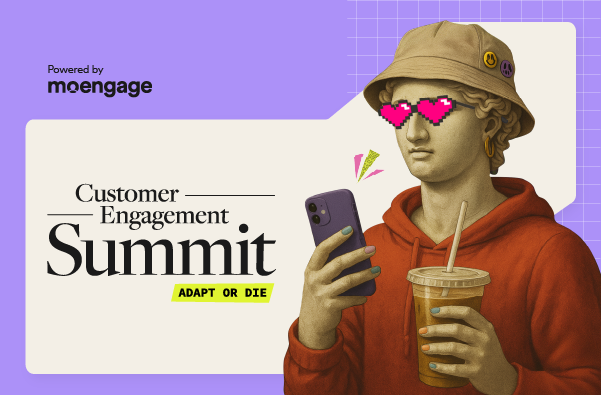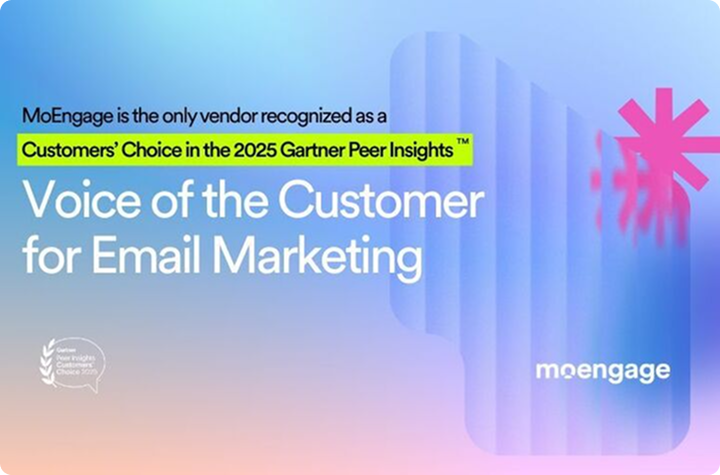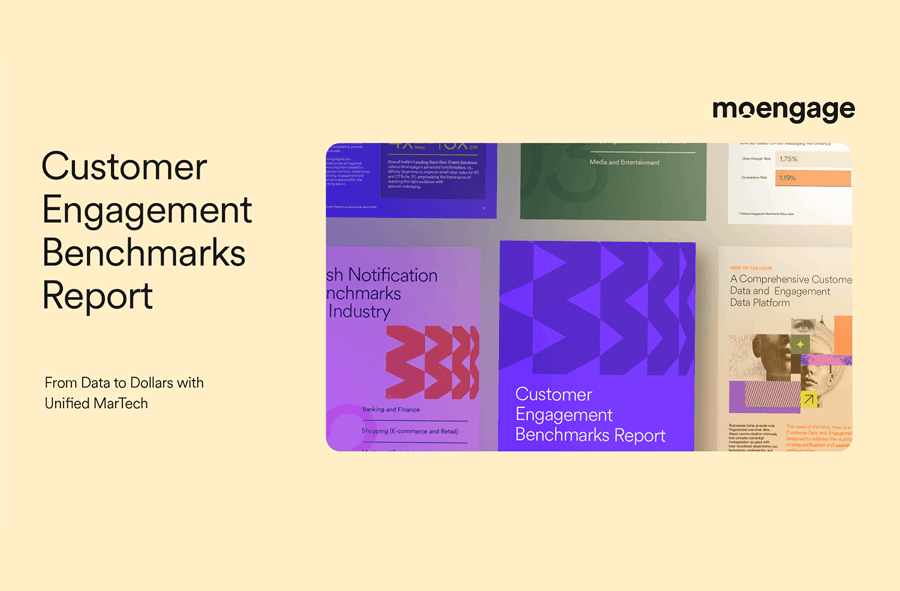Understanding Push Notifications Delivery on Android Phones [Webinar Wrap-up]
![Understanding Push Notifications Delivery on Android Phones [Webinar Wrap-up]](https://www.moengage.com/wp-content/uploads/2020/07/Webinar-Wrap-up-_Understanding-Push-Notifications-Delivery-on-Android-Phones.jpg)
|
Push notifications have revolutionized the way brands engage with their customers today. From notifying users about flash sales, or sending reminders about the discarded cart to sending geo-targeted notifications and transactional alerts, push notifications to help marketers send customized messages to their users at a lesser cost as compared to SMS.
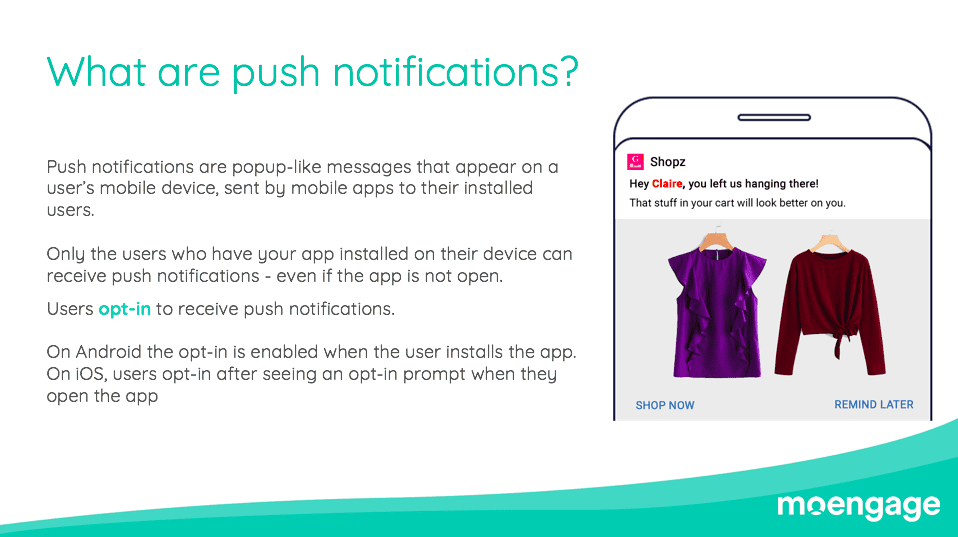
In a MoEngage webinar, Raviteja Dodda, CEO of MoEngage, and Nalin Goel, VP – Products discuss push notification delivery on Android phones. You can listen to the webinar here or continue reading this article that includes the key points from the webinar or you can read this in-depth guide to learn more about push notifications.
| Bonus Content
👉 Boost User Engagement By Maximizing Push Notification Delivery Rates [Download Whitepaper] 👉 Push Notification Benchmarks for Media & Entertainment Mobile Apps, 2021 [Download Benchmarks] |
How Do Push Notifications Impact Business?
To understand the impact of Push Notification, MoEngage analyzed the data across their customer base. The post-analysis observations were as follows:
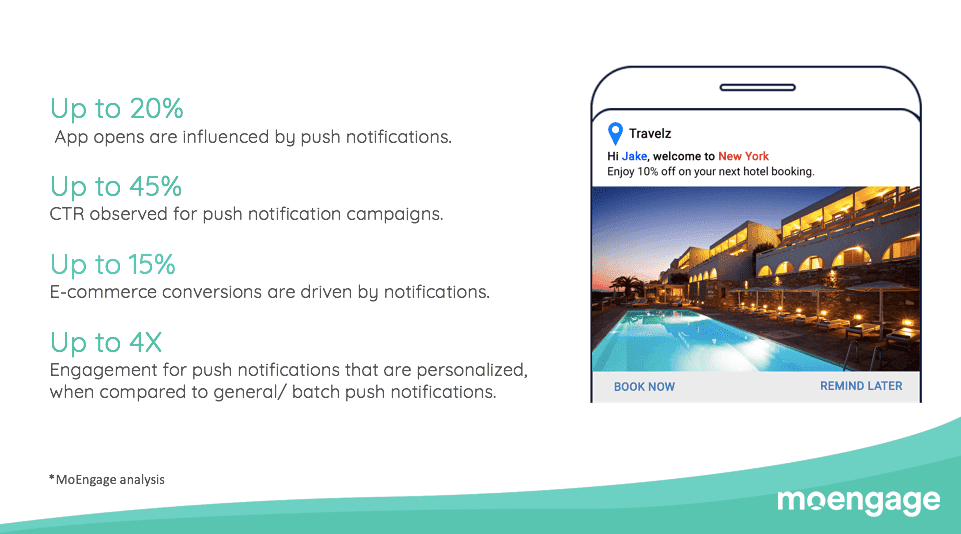
- E-commerce customers found a direct revenue impact – 10% to 15% of the transactions were driven by push notifications.
- The push CTR for personalized notifications was four times more than broadcast messages and reached up to 45%.
- Push notifications influence over 20% of app opens.
How are Push Notifications Delivered?
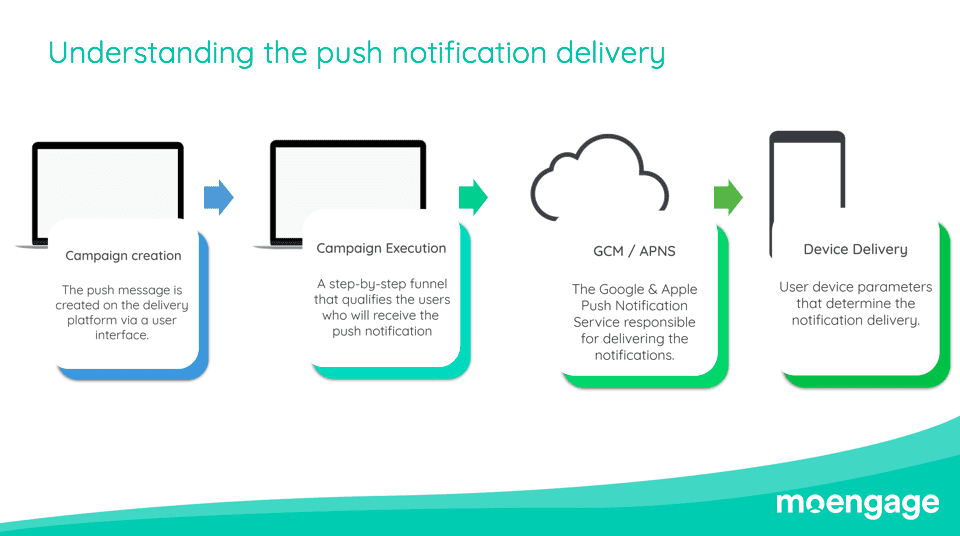
Campaign Creation: The marketer creates a campaign in a marketing dashboard such as MoEngage using the 3-W rule, which implies:
Who (will receive the message. For example, will the message be sent to 7-days active users or 15-days inactive users)
What (message will the user receive. Will it be content or a creative or a mix of both?)
When (should the message be delivered? Will it be delivered immediately or at a scheduled time)
Campaign Execution: Once the marketer executes the campaign at a scheduled time, MoEngage identifies users who fulfill the segmentation criteria set by the marketers and who have at least one active device linked to an active push token.
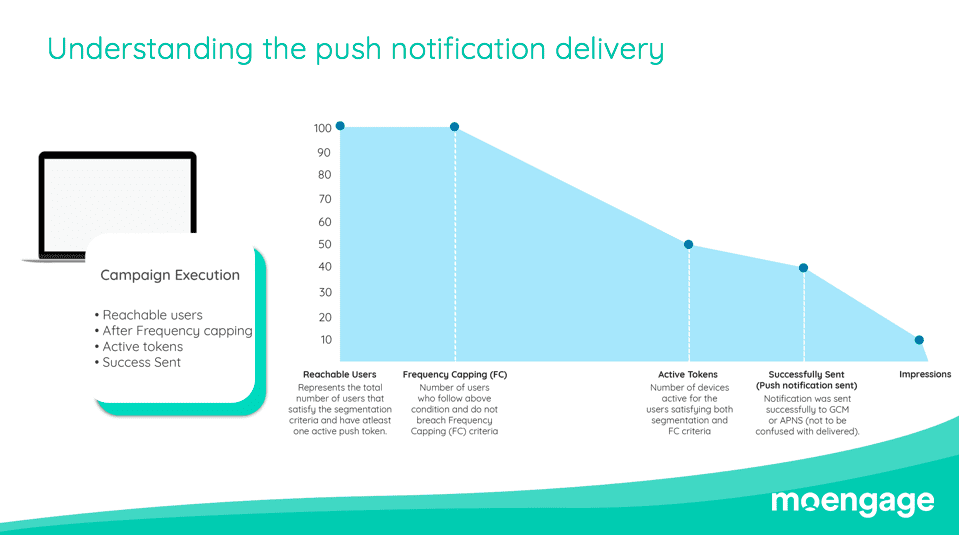
Push token is a unique identifier set by cloud messaging platforms such as APNS and FCM that helps marketers to communicate with the end-users of the app. After identifying the reachable users, MoEngage identifies the eligible users with the help of frequency capping (determines the number of messages that a user will receive during a specific time frame) and determines the active devices that will receive the message.
Cloud Network Delivery: Cloud messaging platforms such as GCM, FCM, and APNS receive the campaign and takes over the delivery process from this stage.
Device Delivery: The cloud messaging platforms relay the message from the marketing partner to the end user’s device.
Impression Creation: Once the user receives the notification, the MoEngage’s Software Developer’s Kit (SDK) informs the server about it – this is called an Impression.
How is push delivery rate measured? What factors influence the delivery of push notifications on Android phones? How can you amplify push notifications delivery for your app? Find answers to all these questions in my next blog that’s coming soon…
Want to know how brands like Bigbasket, Travelz, and Oyo Rooms use MoEngage Push Amplification to improve their push notification delivery rates? Learn more about push amplification here.
Here’s What You Can Read Next |


